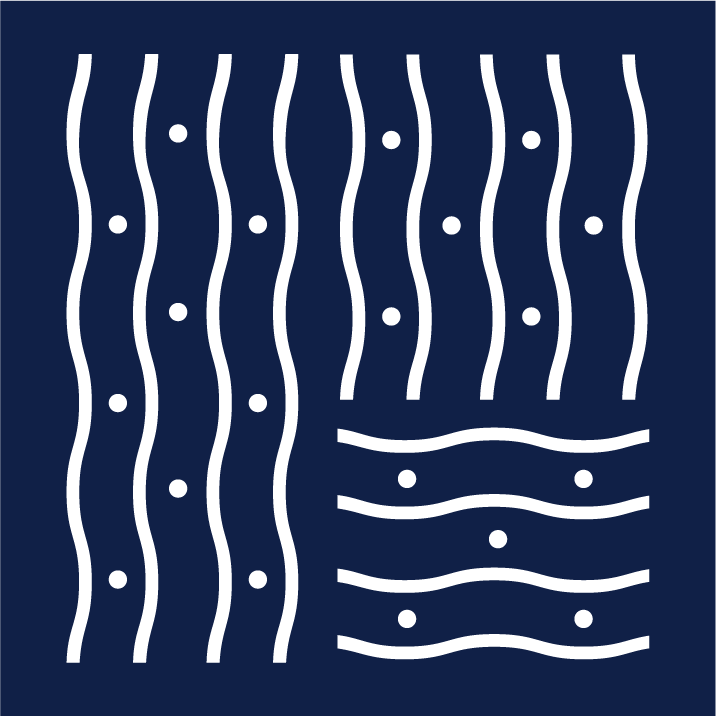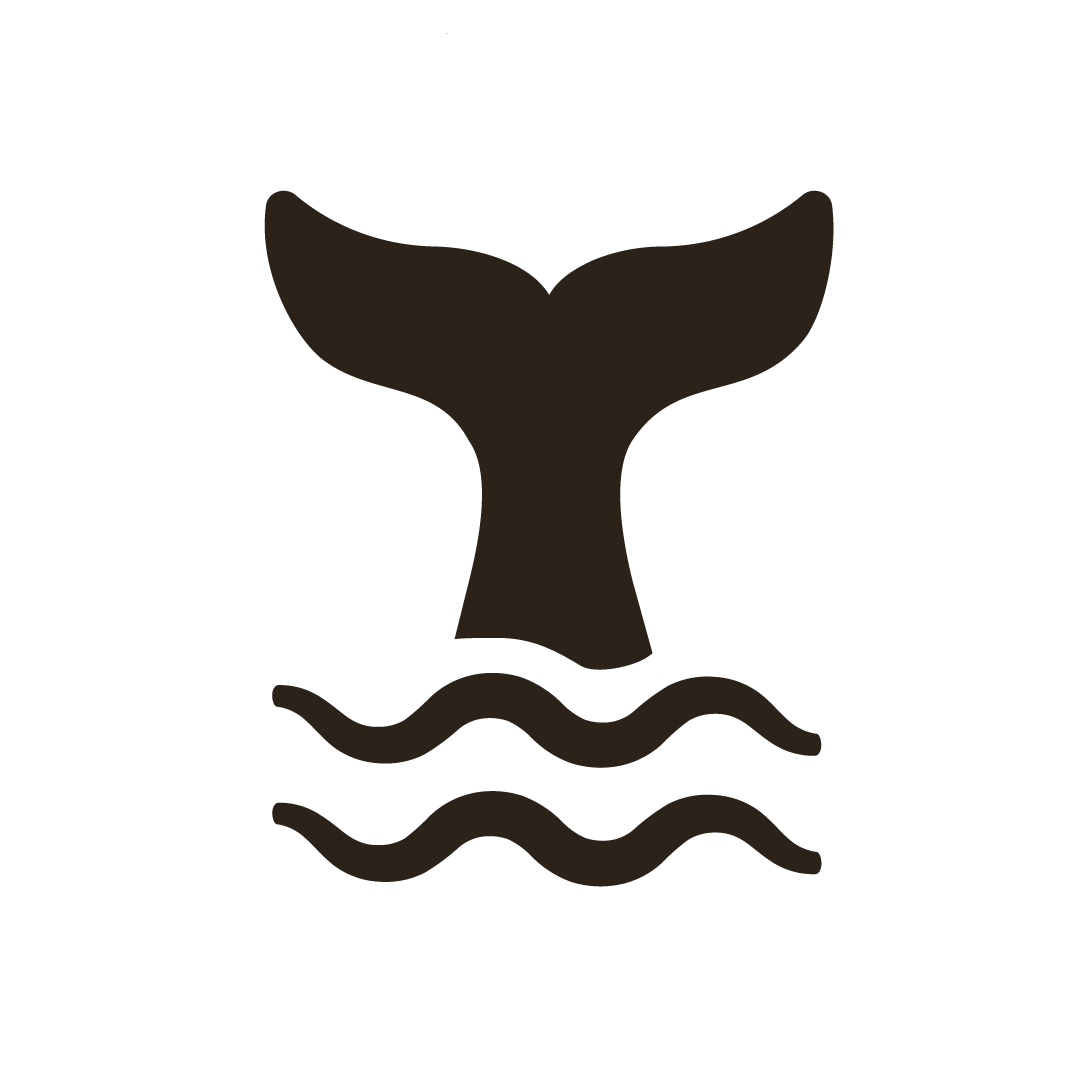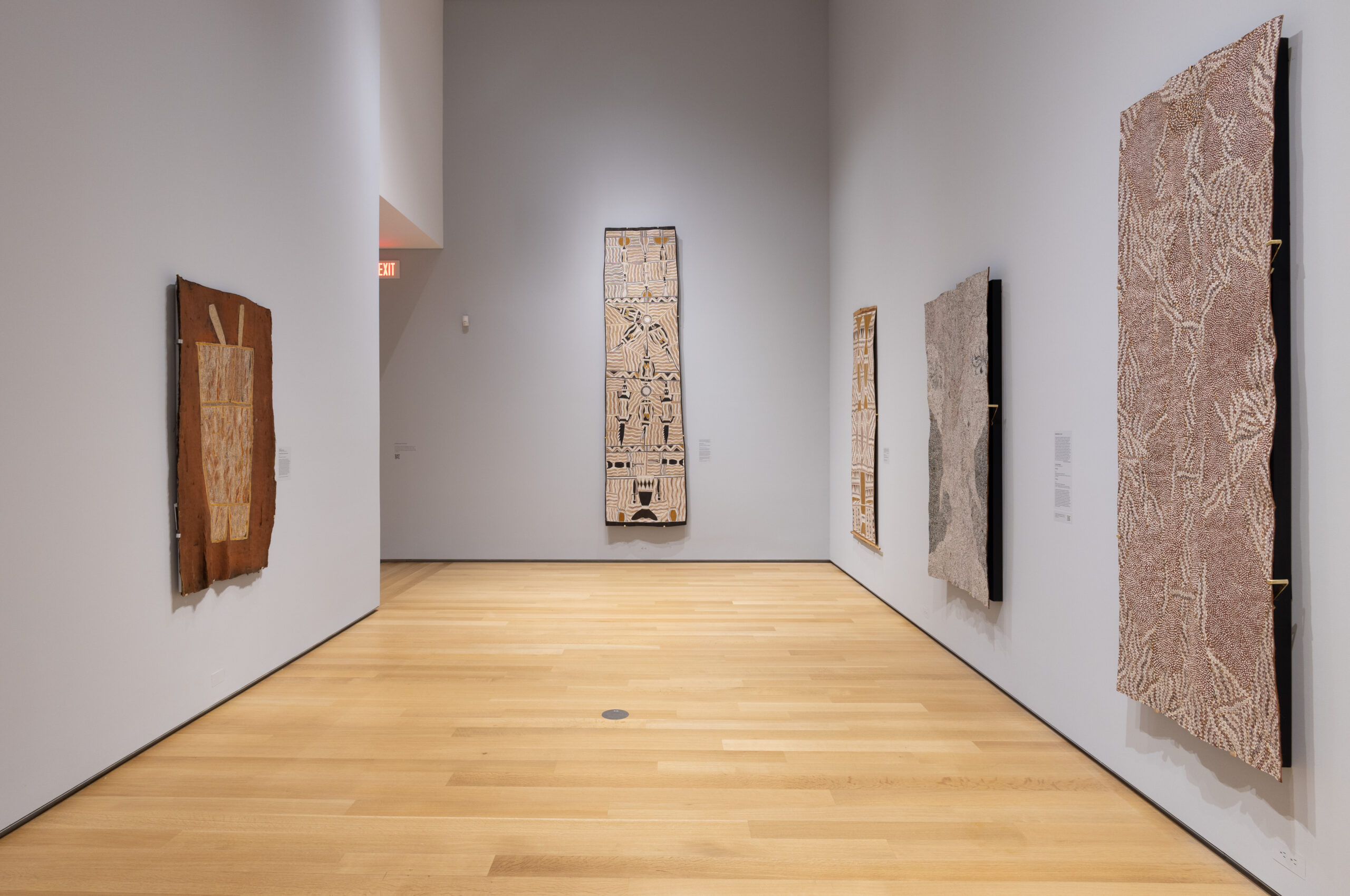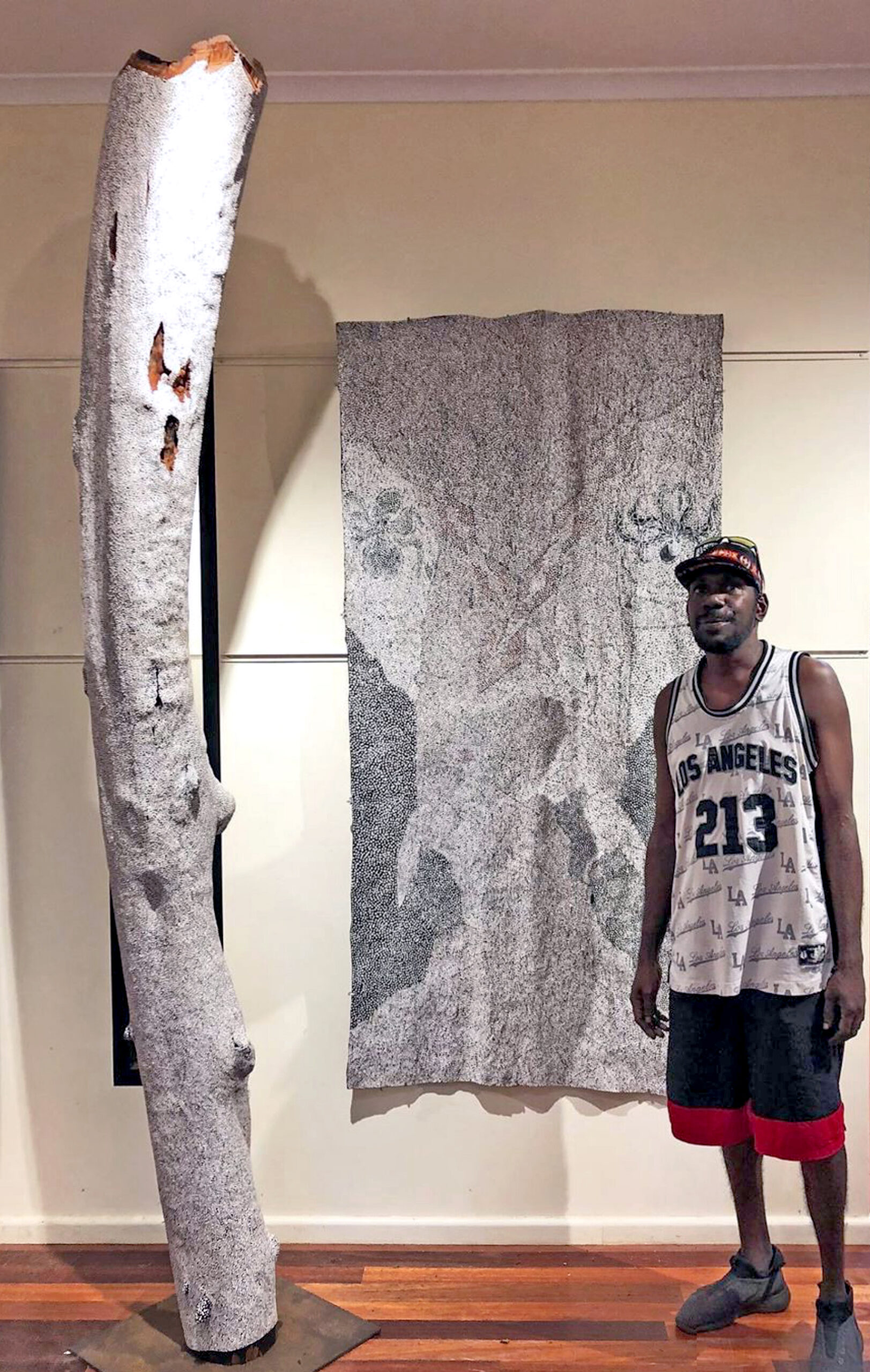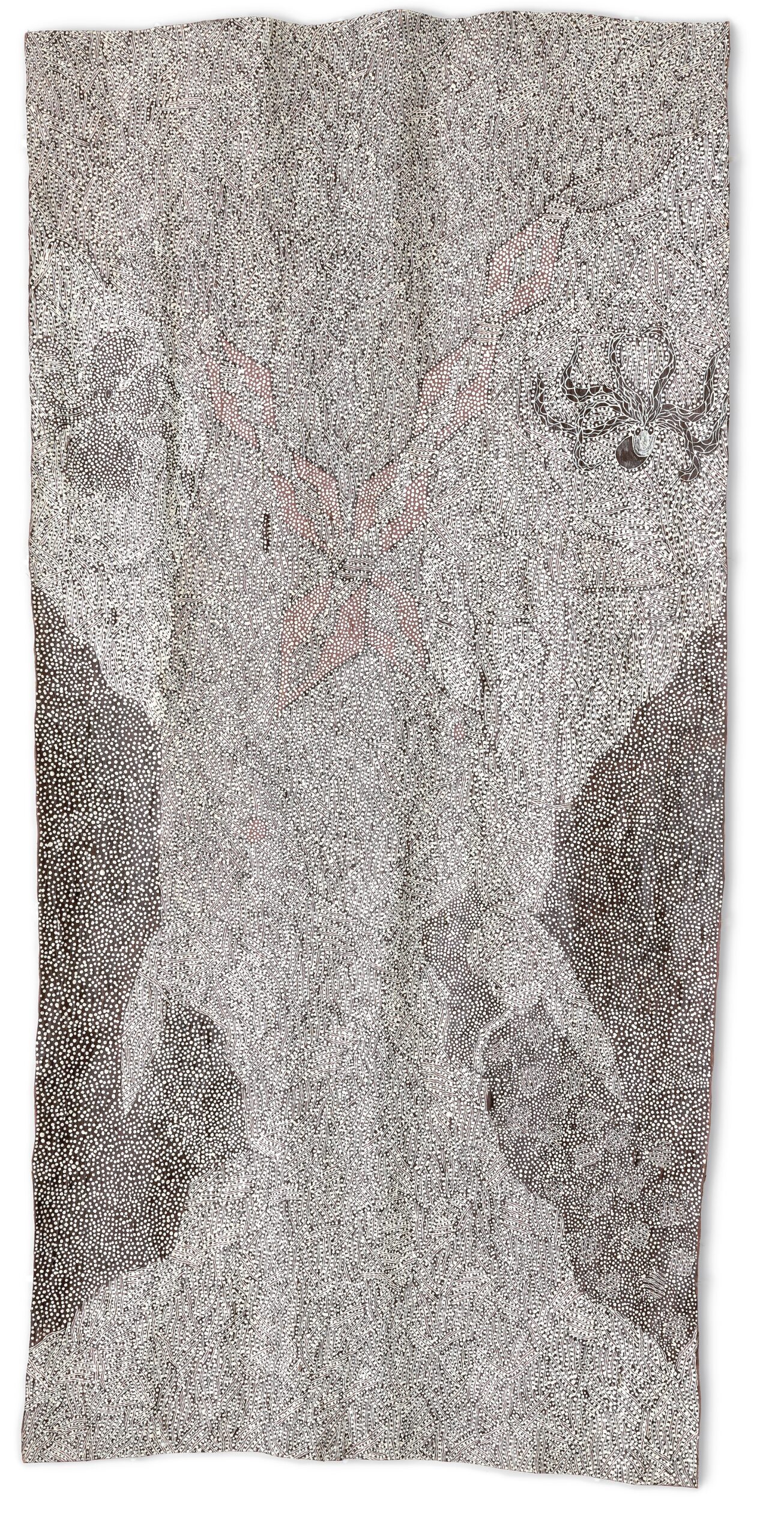
"When people see my paintings somewhere far away in an exhibition, they might say to me, “Where is that painting from?” I will tell them. The saltwater is Manbuyŋa, and I will paint the knife. We sing the knife, a sharp knife named Yikimula—a name only sung by the Munyuku clan. Yes, sitting here right here, I will paint this story. This is the painting belonging to Yarrinya. Yarrinya’s songs and ceremony are major ones. And it is powerful, the story relating to this place, this land. This painting is different from any other. From then on, I painted my mother’s designs, Munyuku paintings. My mother taught me, and also my mother’s brother, Ḏula Ŋurruwutthun, said to me: “You, child, must hold these paintings for yourself, so that later you can teach them to future generations of my clan. And also, to my sisters’ children and my children, all my children will learn to paint on bark with designs.” And thus, from when I was a child, I grew up like that in the Law. I was raised by the Law. The true Yolŋu law."
– BARAYUWA MUNUŊGURR
More Info
Here, Barayuwa paints his mother’s Munyuku clan design. It is connected to the ancestral event of the death of the whale Mirinyuŋu on the beaches of Yarrinya (Munyuku saltwater estate). Munyuku spirit men, while hunting, killed their brother the whale. Mirinyuŋu’s body washed onto the beach and contaminated it with rotting blood and fat. The men used knives to cut the body of the whale, and in shame they threw the knives to sea. This formed a dangerous hidden reef. Barayuwa’s design contains the sacred bones of the whale on the beach. The bands of miny’tji are linked to the choppy saltwater at Yarrinya that exudes power. In ceremony, the Raŋga (whale’s tail) is a ritual object. Mirinyuŋu’s bones, thought to be the essence of a person, became ocean rocks. This combination of bone and rock are important to the clan.
– Buku-Larrŋgay Mulka Centre
Additional Information
Decade
2019
Medium
Natural pigments on eucalyptus bark
Dimensions (IN)
80 5/16 x 39 3/8 x 3 35/64
Dimensions (CM)
204 x 100 x 9
Credit
Kluge-Ruhe Aboriginal Art Collection of the University of Virginia. The 2017-19 Kluge-Ruhe Maḏayin Commission. Museum purchase, 2023.
Narrative
Munyuku
The Munyuku clan belongs to the Yirritja moiety. Major spiritual themes relate to marine life...
Songline
Mirinyuŋu | The Whale
During the Waŋarr, two spirit men from the Munyuku clan hunted and killed a whale...
Location
2010s
The 2010s saw Buku-Larrŋgay Mulka go from strength to strength. At the National Aboriginal and...
About The Artist(s)
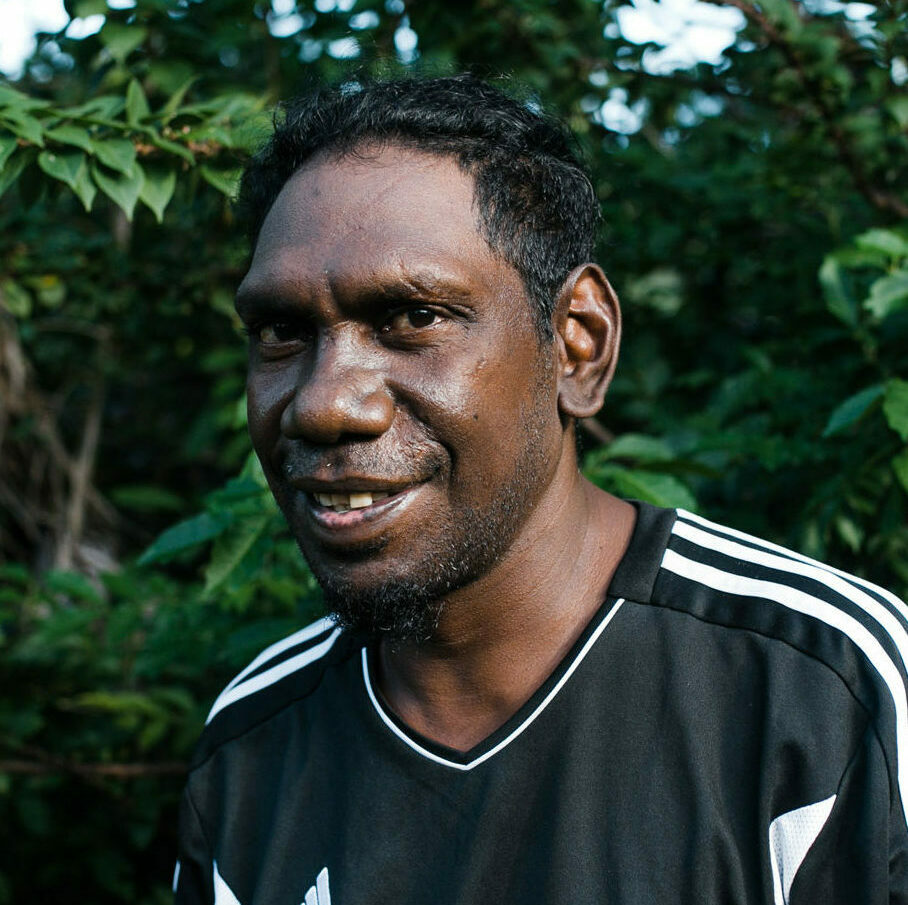
Clan
Gupa-Djapu’
Artist Dates
Born 1980
Barayuwa Munuŋgurr
Barayuwa Munuŋgurr is the grandson of Woŋgu Munuŋgurr and Djimbaryun Ŋurruwutthun, giving him authority to paint both Djapu’ and Munyuku designs. In recent years, he has gained acclaim for his dense paintings of the Munyuku saltwater estate of Yarrinya. His 2015 wall drawing Manbuyŋa was acquired by the Museum of Contemporary Art in Sydney. In 2019 he traveled to the Hood Museum of Art, Dartmouth and the Kluge-Ruhe Aboriginal Art Collection to work on Maḏayin: Eight Decades of Aboriginal Australian Bark Painting from Yirrkala.
Collections Represented
Art Gallery of New South Wales
Berndt Museum of Anthropology, University of Western Australia
Kluge-Ruhe Aboriginal Art Collection of the University of Virginia
Museum and Art Gallery of the Northern Territory
Museum of Contemporary Art Australia
